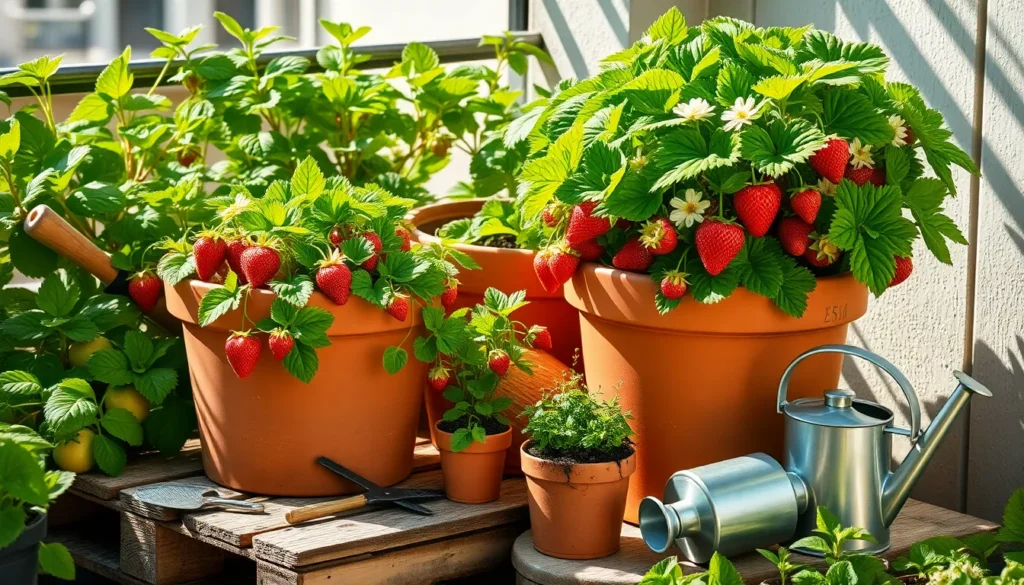There’s something undeniably delightful about biting into a sun-warmed strawberry, freshly picked and perfectly sweet. Whether you’re a gardening novice or a seasoned green thumb, the idea of growing strawberries in containers opens up an exciting avenue to enjoy this juicy fruit right at your doorstep. Container gardening is not merely for those with limited space; it’s a versatile approach that offers control over soil quality, pest management, and sunlight exposure. With strawberries, this method can yield a bountiful harvest even in the smallest of spaces, from a sunny balcony to a cozy kitchen windowsill.
In this article, we’ll guide you through the ins and outs of growing strawberries in containers, with tips and techniques that cater to all skill levels. Beginners will appreciate straightforward advice on selecting the right container and soil mix, while more experienced gardeners might find inspiration in advanced strategies for maximizing yield and flavor. By the end of this read, you’ll be equipped with practical knowledge to nurture your plants through every growth stage. From choosing the best strawberry varieties for containers to understanding the nuances of watering and fertilizing, this journey promises to be as rewarding as it is educational.
Imagine the satisfaction of plucking ripe strawberries from your very own container garden, knowing you’ve nurtured them from seedling to succulent fruit. As we delve into this topic, we’ll explore solutions to common challenges like pests and unpredictable weather, ensuring your strawberry-growing experience is as smooth as it is fruitful. Embrace the joy of container gardening with strawberries, and soon, you’ll be savoring the fruits of your labor—literally!
Select Suitable Strawberry Varieties
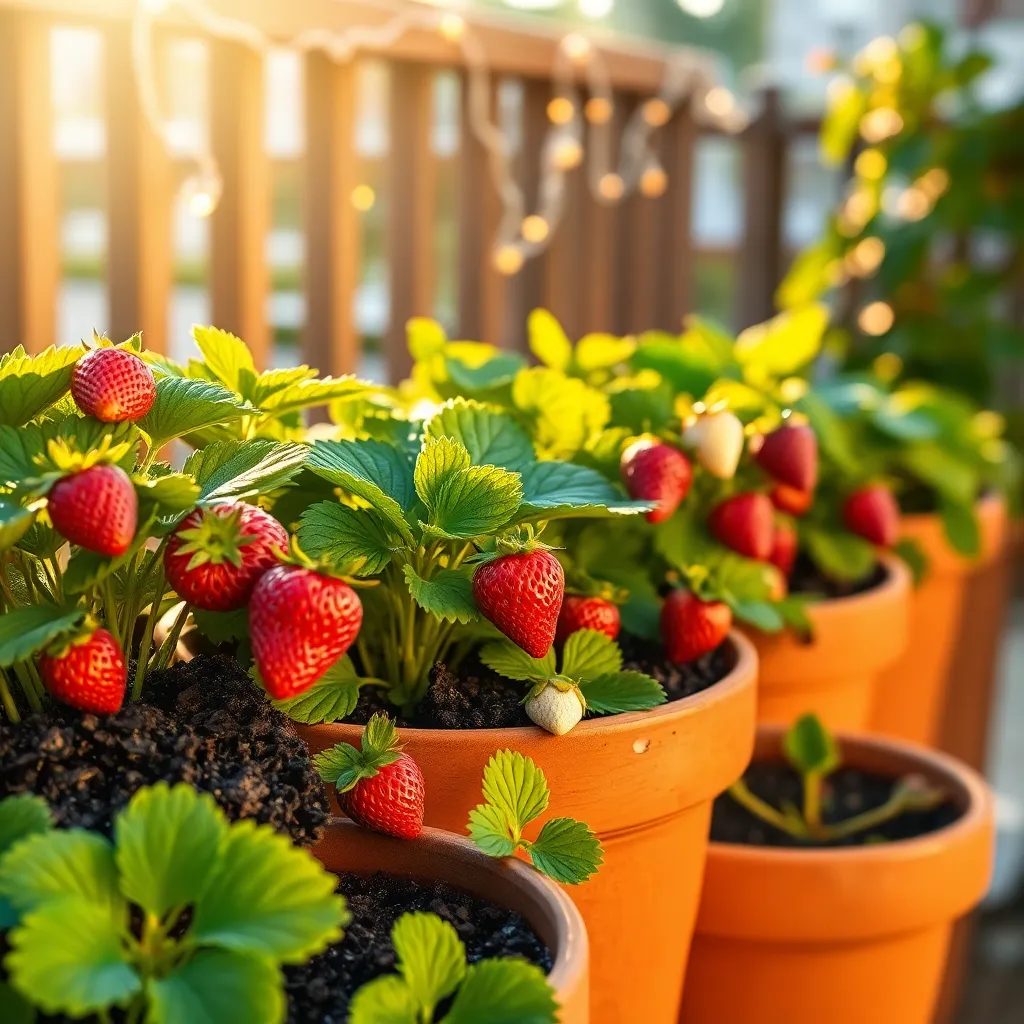
When choosing strawberry varieties for container gardening, consider both the size of the container and your growing conditions. June-bearing, everbearing, and day-neutral strawberries each have unique characteristics that can influence your success.
June-bearing strawberries produce a single, large crop in early summer, making them ideal if you want a bountiful harvest all at once. They require more space, so use a larger container and ensure it has adequate drainage to prevent root rot.
Everbearing strawberries offer two to three harvests throughout the growing season, which is perfect for gardeners who enjoy fresh strawberries over an extended period. Plant them in containers with at least 12 inches of soil depth and use a well-draining potting mix rich in organic matter.
Day-neutral strawberries are less affected by the length of daylight and can produce fruit continuously until the first frost. These are versatile for container gardening as they can thrive in a variety of climates, provided they receive adequate water and are placed in a sunny spot.
For all varieties, ensure your containers have ample drainage holes and are placed in locations that receive at least 6-8 hours of sunlight daily. Watering is crucial; maintain a consistent moisture level without waterlogging the soil, aiming to keep it evenly moist.
Prepare Container with Quality Soil
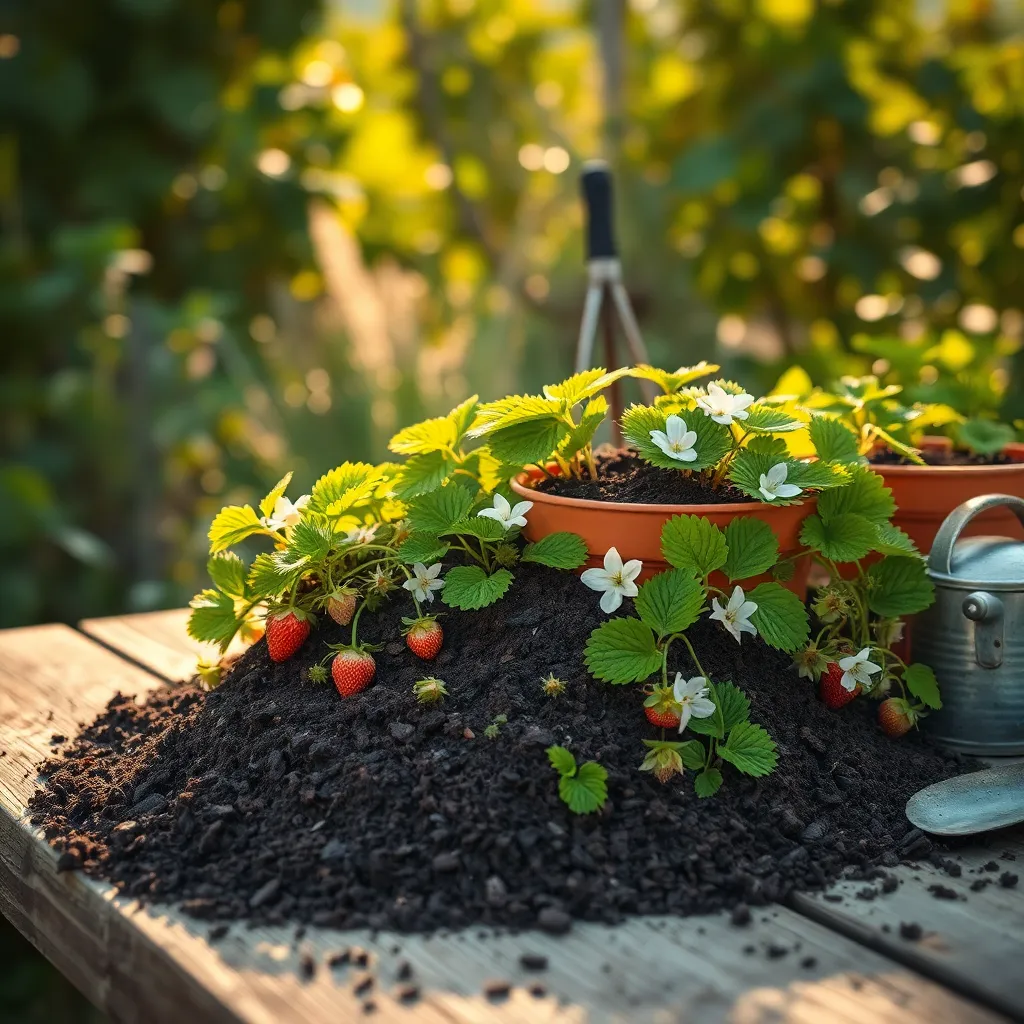
To ensure your strawberries thrive in containers, begin by selecting a high-quality potting mix specific for container gardening. Look for a mix that combines ingredients such as peat moss, perlite, and vermiculite, which help provide good drainage and aeration.
It’s essential to avoid garden soil, which can compact in containers and impede root growth. Instead, a well-balanced potting mix will supply the right nutrients and structure needed for successful strawberry cultivation.
For those interested in organic gardening, consider adding a layer of compost to your potting mix to enrich the soil with natural nutrients. This not only improves soil fertility but also boosts water retention, which is critical for strawberry plants.
Advanced gardeners might want to experiment with adding a slow-release fertilizer to the mix, ensuring your strawberries receive a steady supply of nutrients throughout the growing season. This technique is especially beneficial if you’re growing day-neutral varieties, which produce fruit continuously.
Plant Strawberries Correctly
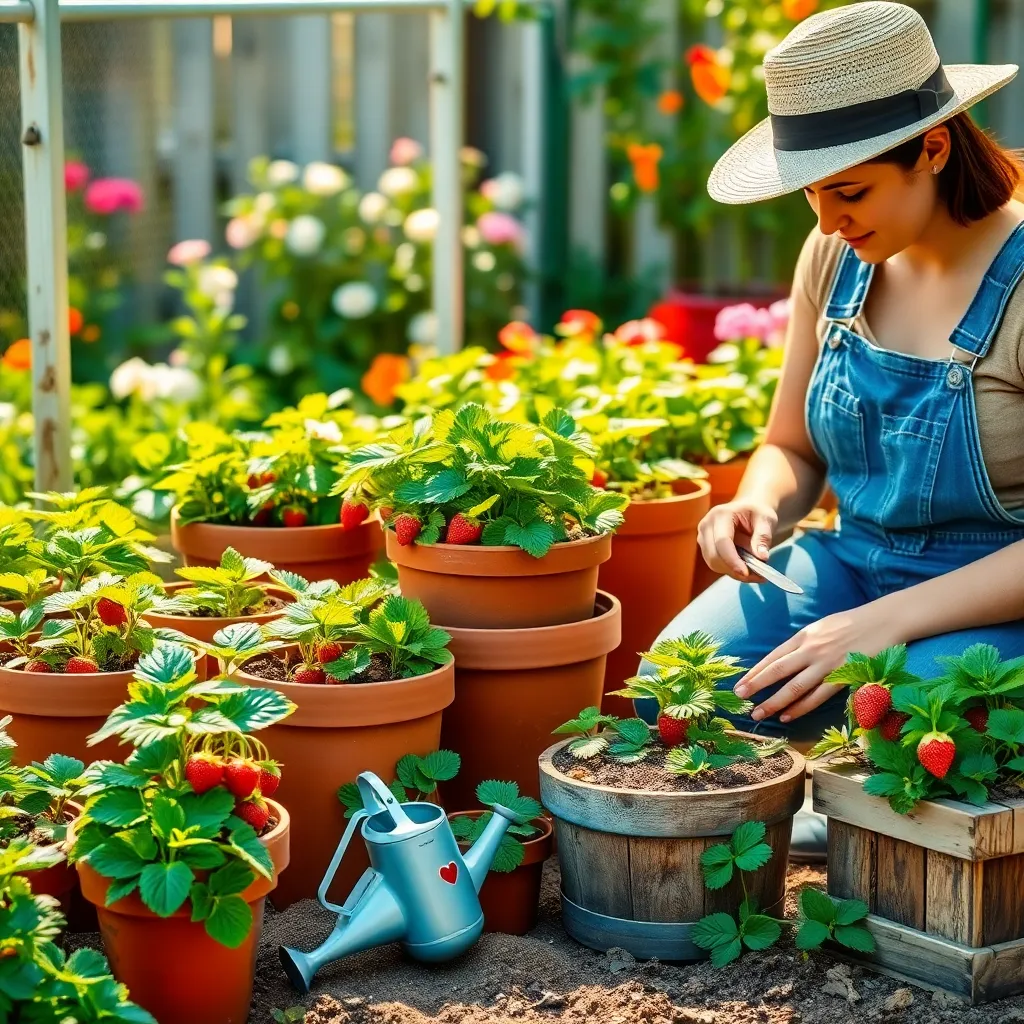
To plant strawberries correctly in containers, begin by selecting the right variety for your needs. Choose everbearing or day-neutral varieties if you wish to harvest fruit throughout the growing season, as these types are suitable for container gardening.
Before planting, ensure that your containers have adequate drainage to prevent waterlogged roots. Use a high-quality potting mix that retains moisture yet drains well, such as a blend containing peat moss, perlite, and compost.
Position the strawberry plants so that the crown is level with the soil surface; this is crucial to prevent rot. Maintain a spacing of about 12 inches between each plant to allow for proper air circulation and growth.
After planting, water thoroughly to help the soil settle around the roots. Regular watering is essential, but be cautious not to overwater; aim to keep the soil consistently moist but not soggy.
For optimal growth, place containers in a location that receives at least six to eight hours of sunlight daily. If sunlight is limited, consider supplementing with grow lights to ensure your strawberries receive enough light for fruit production.
Ensure Optimal Watering Routine
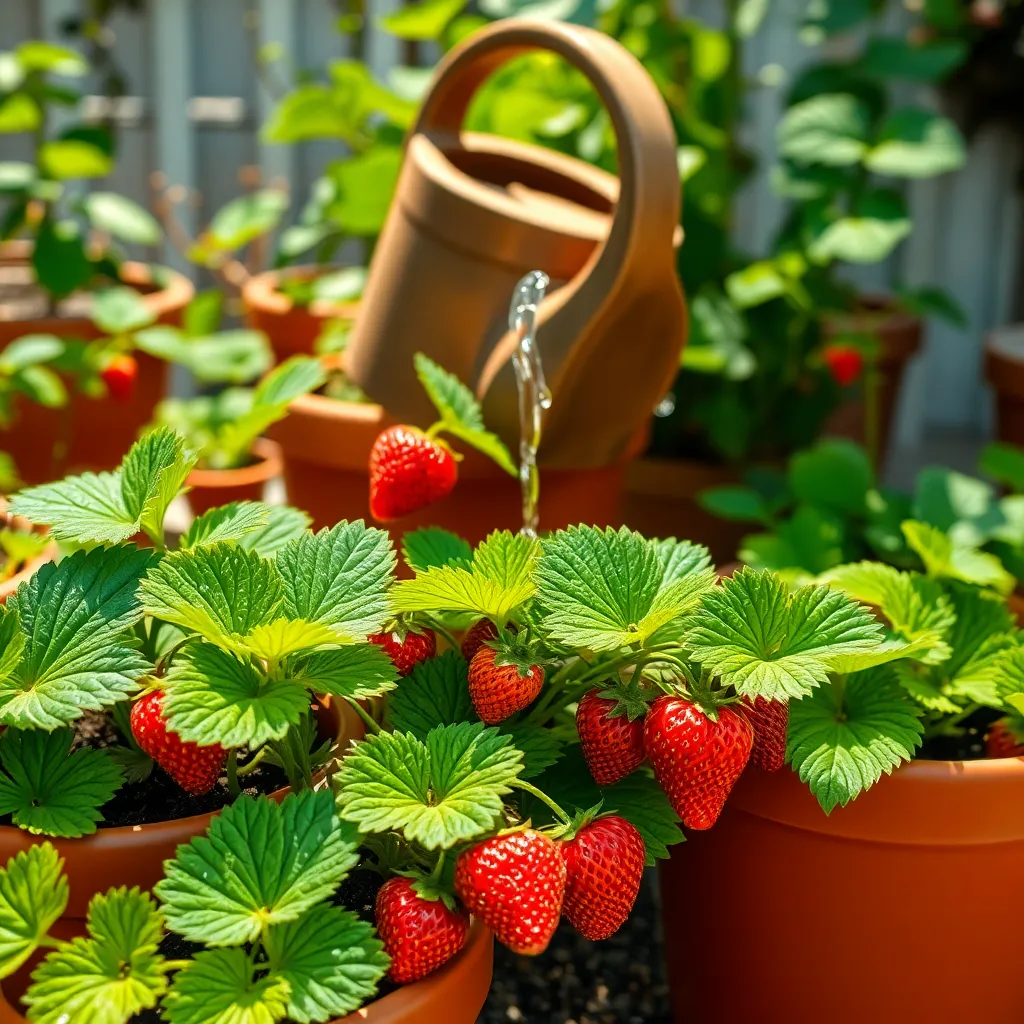
Proper watering is crucial for strawberry plants grown in containers to thrive. Container-grown strawberries need more frequent watering than those planted in the ground, as containers dry out faster.
Begin by checking the soil moisture daily, especially during hot weather. Stick your finger about an inch into the soil; if it feels dry, it’s time to water.
Use a watering can with a narrow spout to avoid splashing water on the leaves, which can lead to fungal diseases. Water the soil directly and thoroughly until you see it draining from the bottom of the container.
Consider using a moisture-retaining potting mix that helps maintain consistent soil moisture. You can also add a layer of mulch on top of the soil to reduce evaporation and keep the roots cool.
Maintain and Fertilize Regularly
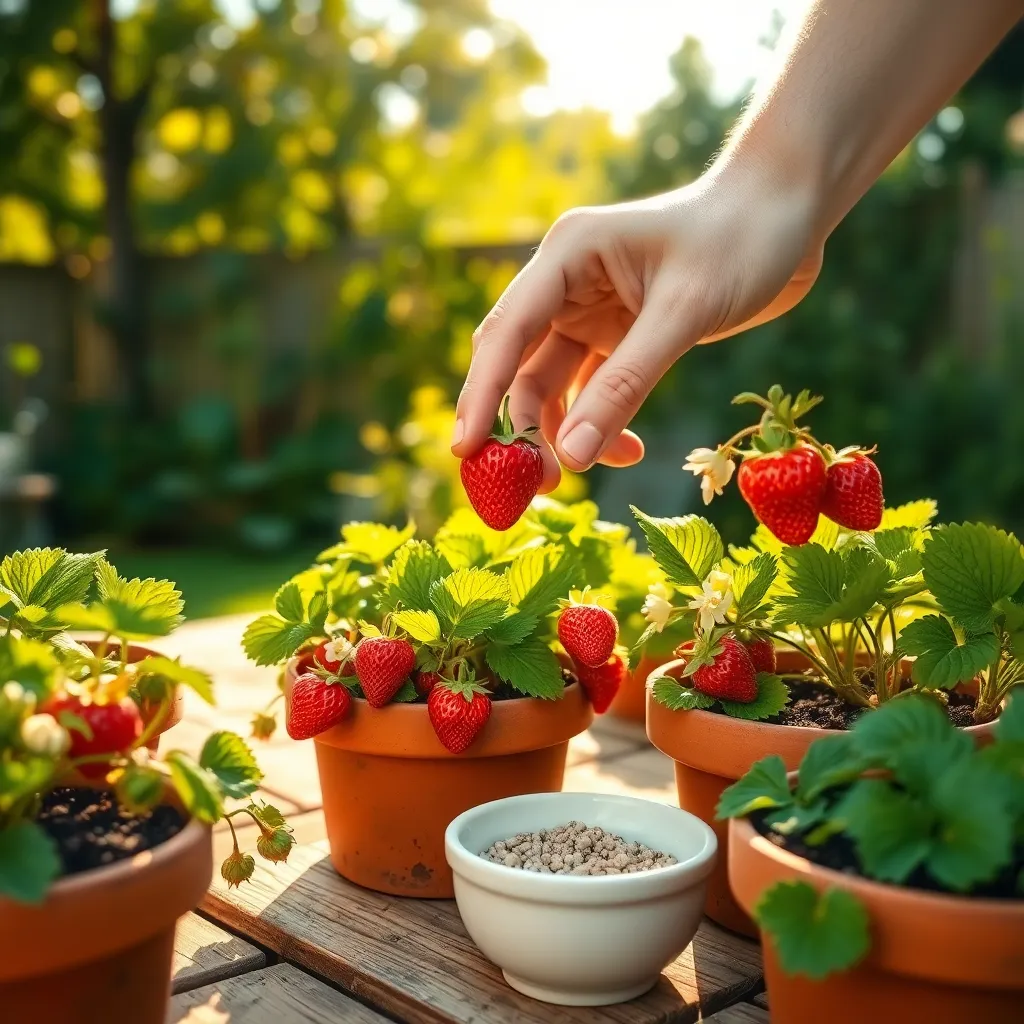
Regular maintenance and fertilization are crucial to the healthy growth of strawberries in containers. Begin by inspecting your plants weekly to catch any signs of disease or pests early, ensuring your strawberries thrive.
Strawberries are heavy feeders, and using a balanced, water-soluble fertilizer every two weeks can significantly boost their growth. Opt for a formula like a 10-10-10 or 20-20-20, ensuring you follow the package instructions for correct dilution and application.
Throughout the growing season, removing yellowed or dead leaves will promote better air circulation and prevent disease. Additionally, consistently removing any runners that form will help the plant focus its energy on producing fruit.
Consider using organic fertilizers such as fish emulsion or seaweed extract for a more natural approach. These options not only feed your plants but also improve soil health, which is crucial when growing in containers.
Conclusion: Growing Success with These Plants
In nurturing your strawberries in containers, you’ve also cultivated essential relationship skills. First, you’ve learned the importance of providing the right environment, much like creating a nurturing space for your relationships. Second, understanding the significance of consistent care mirrors the need for regular attention to those you cherish. Third, you’ve embraced patience, realizing growth takes time and persistence. Fourth, adaptability has been key, as you’ve adjusted to changing conditions, just as adaptability strengthens personal connections. Lastly, the power of communication shines through, whether it’s understanding your plants’ needs or actively listening to loved ones.
As an actionable next step, take a moment today to apply one of these principles to your relationships, perhaps by reaching out with a simple, thoughtful gesture.
Remember, growth is an ongoing journey. Save or bookmark this article to revisit these relationship-building insights. By continually nurturing both your strawberries and your connections, you’re sowing seeds for a thriving future. Empower yourself with the knowledge that every small effort contributes to blossoming relationships, ensuring a bountiful harvest of love and understanding.

